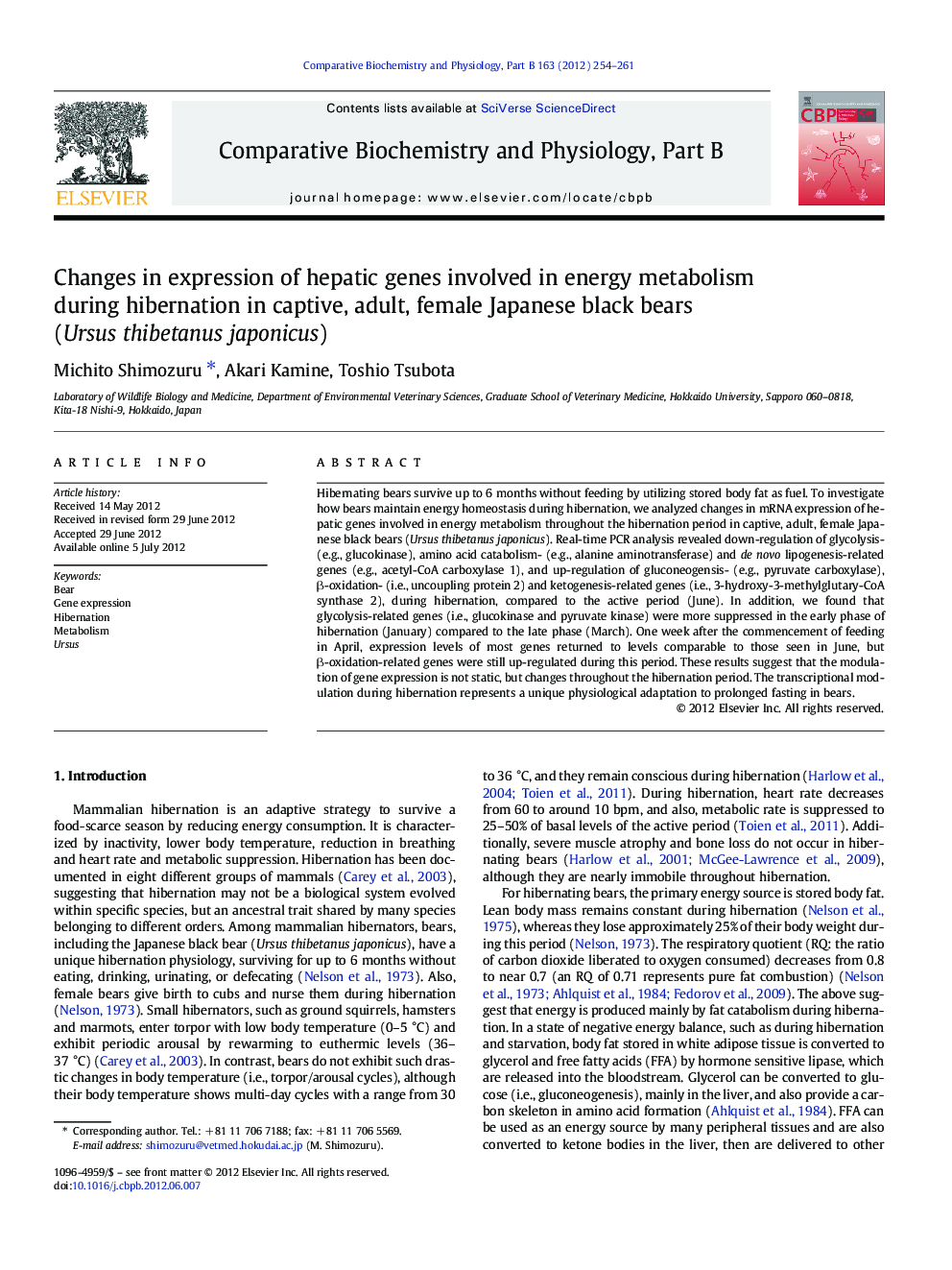| Article ID | Journal | Published Year | Pages | File Type |
|---|---|---|---|---|
| 1975468 | Comparative Biochemistry and Physiology Part B: Biochemistry and Molecular Biology | 2012 | 8 Pages |
Hibernating bears survive up to 6 months without feeding by utilizing stored body fat as fuel. To investigate how bears maintain energy homeostasis during hibernation, we analyzed changes in mRNA expression of hepatic genes involved in energy metabolism throughout the hibernation period in captive, adult, female Japanese black bears (Ursus thibetanus japonicus). Real-time PCR analysis revealed down-regulation of glycolysis- (e.g., glucokinase), amino acid catabolism- (e.g., alanine aminotransferase) and de novo lipogenesis-related genes (e.g., acetyl-CoA carboxylase 1), and up-regulation of gluconeogensis- (e.g., pyruvate carboxylase), β-oxidation- (i.e., uncoupling protein 2) and ketogenesis-related genes (i.e., 3-hydroxy-3-methylglutary-CoA synthase 2), during hibernation, compared to the active period (June). In addition, we found that glycolysis-related genes (i.e., glucokinase and pyruvate kinase) were more suppressed in the early phase of hibernation (January) compared to the late phase (March). One week after the commencement of feeding in April, expression levels of most genes returned to levels comparable to those seen in June, but β-oxidation-related genes were still up-regulated during this period. These results suggest that the modulation of gene expression is not static, but changes throughout the hibernation period. The transcriptional modulation during hibernation represents a unique physiological adaptation to prolonged fasting in bears.
